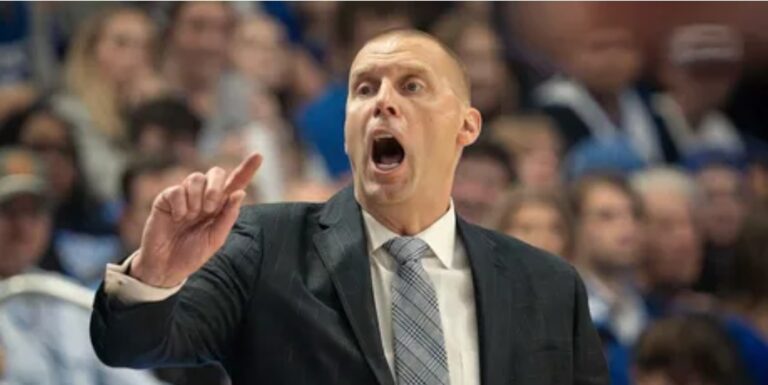**Will Mark Pope Stick with Ten Players Getting Action All Season Long?**
Mark Pope, head coach of the Brigham Young University (BYU) men’s basketball team, has made a name for himself with a high-paced, deep rotation style that gives a lot of players the opportunity to see minutes on the court. As the 2023-2024 season progresses, the question looms: will Pope continue his trend of utilizing a ten-man rotation throughout the entire season, or will circumstances force him to adjust to a more traditional, smaller lineup?
At the heart of Pope’s coaching philosophy is the belief that playing time should be earned through effort, development, and depth. This strategy has been evident in his rotations over the past few seasons. In a college basketball landscape where some teams lean on a core group of six to eight players, Pope has been relatively unique in giving significant playing time to a much larger group. His goal is to create competition within the team and keep players fresh by distributing minutes evenly, while also ensuring that every player gets the chance to contribute. This approach allows players to build chemistry, stay engaged, and develop throughout the season, as they know they have a role to play.
There are numerous advantages to running a deep rotation, particularly for a coach like Pope, who often faces the challenge of building a team with varying levels of experience. In a program like BYU, where players often come from different backgrounds, it’s essential to foster a team culture that values contributions from all members. A ten-man rotation ensures that more players remain motivated and involved, which can increase overall team morale.
However, there are also drawbacks to using such a large rotation, particularly as the season progresses. The most notable challenge is balancing the development of individual players with the team’s overall performance. In high-stakes games, when the pressure is on, coaches tend to shorten their rotation to focus on their most reliable and experienced players. Pope will likely be faced with this situation as the season intensifies. In close games or in postseason play, playing time for some may become more limited, as Pope may opt for a smaller rotation to ensure consistency and build a stronger team rhythm.
Moreover, the logistics of managing ten players can create its own set of issues. Too many players competing for minutes can lead to conflicts or feelings of frustration from those who may not get the amount of playing time they desire. This dynamic could challenge team chemistry, especially if certain players begin to feel undervalued or disengaged. Pope’s ability to maintain balance within the locker room and keep players happy with their roles will be a crucial factor in determining whether a ten-man rotation remains sustainable.
As for the on-court product, it’s important to note that Pope’s offensive system, which emphasizes fast-paced play and depth, relies on having fresh bodies to rotate in and out. The depth of a ten-man rotation could allow BYU to wear down opponents, particularly during long stretches of games or in back-to-back contests. However, as the season approaches tougher competition and higher stakes, Pope may have to tighten his rotation, leaning on his most skilled players to secure victories.
In conclusion, while Mark Pope’s strategy of using a ten-man rotation is well-suited to the development of a cohesive team and can bring advantages in terms of depth and competition, the reality of the season’s demands may force him to adjust. As BYU faces stronger opponents and enters more critical games, Pope will likely have to make decisions based on game context and player performance, which could lead to a more condensed rotation as the season unfolds. Whether Pope sticks with ten players all year will ultimately depend on how well his players adapt to their roles and how his team performs in the critical moments of the season.


